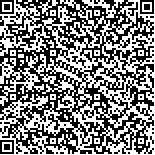下载中心
优秀审稿专家
优秀论文
相关链接
摘要

机载激光雷达测深系统(ALB)是除声呐测深系统之外最可靠的遥感水深测量系统。随着ALB的商业化,越来越多的研究机构能够获取到水体全回波数据,对水体全回波数据的处理方法也越来越多。本文首先介绍ALB测量原理的基础上,对全波数据的预处理和波峰搜索算法进行概述,并对这些处理方法的优缺点进行总结。考虑到激光脉冲和水面、水体以及水底的作用是个复杂的过程,所以文章接着分析了影响ALB测深精度的主要因素(水深、水质和水下底质反射率),并在最后总结归纳了ALB系统在水下地物分类中的最新应用现状和未来应用的发展趋势。
Aside from sonar systems, Airborne LIDAR Bathymetry (ALB) has become the most reliable depthometer. With the commercialization of ALB, several companies have produced powerful ALB, and research institutions have obtained the full-waveform data of water. Meanwhile, several algorithms have been proposed to process the signal of ALB. In this work, we introduce the theoretical basis of ALB and then review algorithms of correction for pulse stretching and peak finding of full waveform. Then, we analyze the main influencing factors of accuracy, including water depth, water color, and reflectance of substrates. We also provide an overview of the new application of ALB in substrate classification. In specific, ALB can help retrieve information from full waveform to the maximum extent. We draw the following conclusions: (1) Pulse stretching is mainly caused by the topography of substrate, whereas algorithms for correcting pulse stretching have been developed under the consideration of general terrain slope or incident angle of pulse. The complex topography of substrate should be considered, especially for the application in coral reef, where substrates distribute inhomogeneity. (2) Algorithms of peak finding of full waveform can be separated into three kinds: echo detection, mathematical approximation, and deconvolution. Echo detection methods run fast but are influenced by environmental noise more easily. The object function of mathematical approximation methods is difficult to be solved, but environmental parameters such as water attenuation coefficient can be derived. Deconvolution methods are stable but need to take effective measures to suppress noise. (3) The proposed algorithm cannot work well for extremely shallow water, especially at depths within centimeter level, but polarization lidar may solve the problem in the future. Low water quality and low reflectance of substrate reduce signal and noise ratio. Thus, new algorithms need to be developed for these conditions in the future. (4) The new application of ALB in substrate classification and data fusion with hyperspectral image indicates that further information in full waveform of water should be retrieved in the future.

